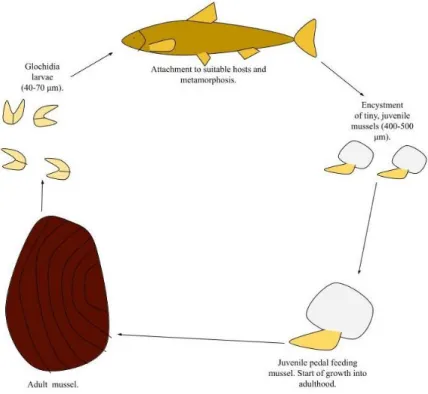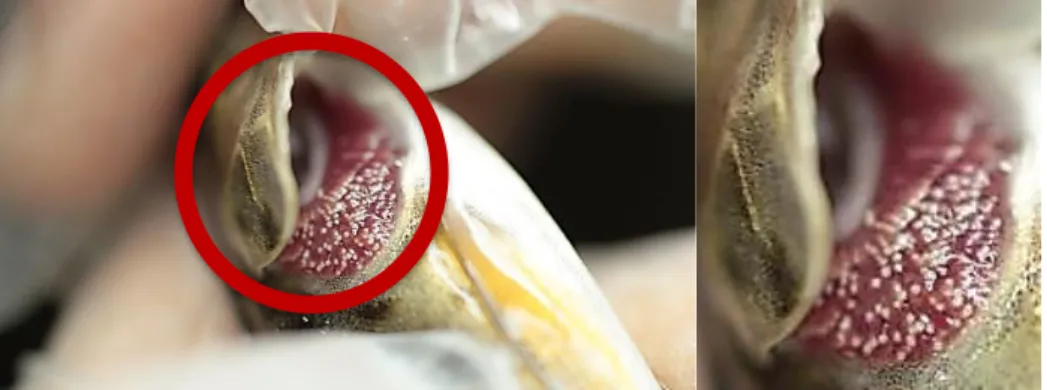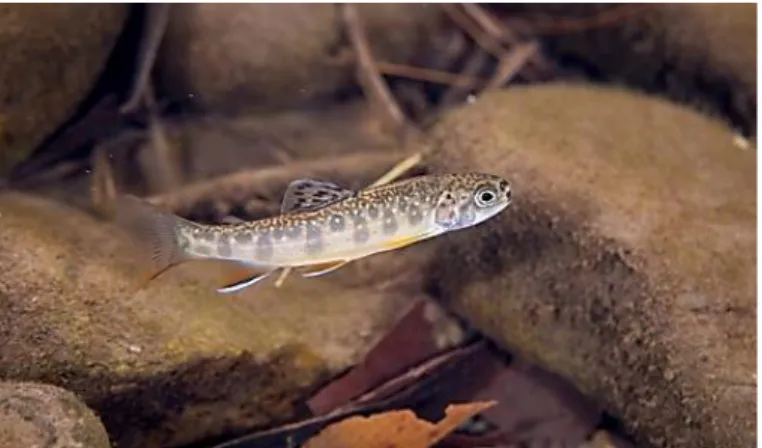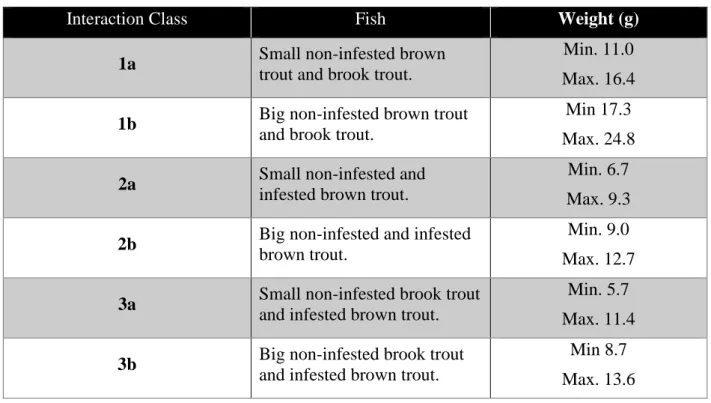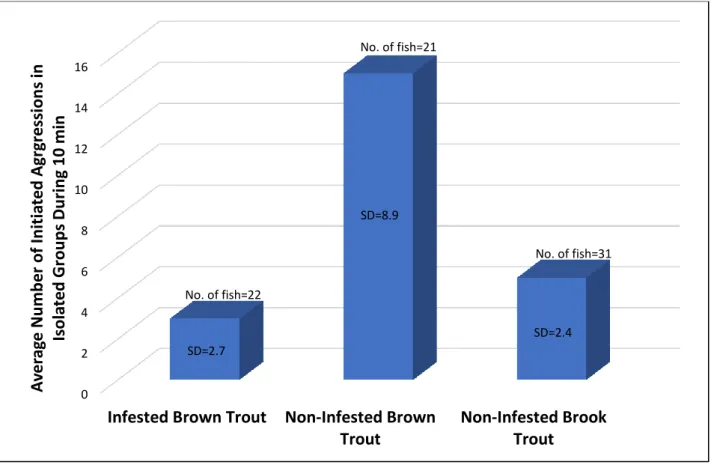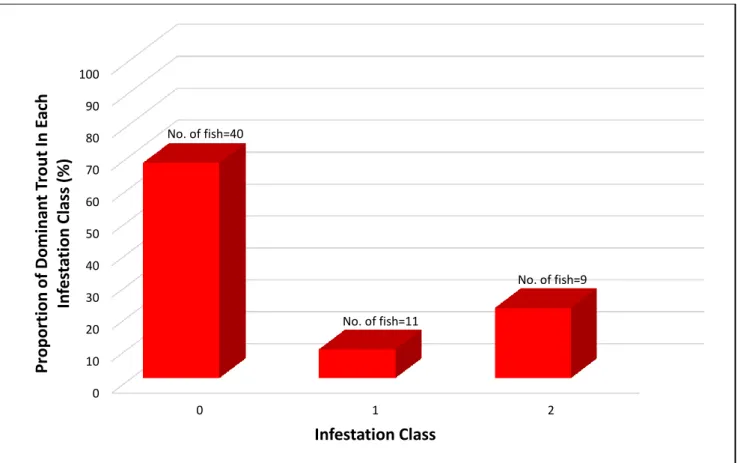Glochidia larvae of the freshwater pear mussel parasitize juvenile brown trout during their maturation into small mussels. As such, this study aimed to determine if mussel infestation had any negative impact on the dominance performance of brown trout when encountering non-larval brown trout and invasive brook trout. The isolated group consisting of infected brown trout had a lower mean number of initiated aggressions.
The infected brown trout's performance did not differ between interactions with either uninfected brown trout or brook trout. Margaritifera margaritifera) influences the behavior of young brown trout (Salmo trutta) and their interactions with invasive brook trout (Salvelinus fontinalis).
The freshwater pearl mussel
The purpose of this study was to determine how the freshwater pearl mussel is infected with glochidia. Margaritifera margaritifera) affects the behavior of brown trout fry (Salmo trutta) and their interactions with the invasive brown trout (Salvelinus fontinalis).
The brown trout
One of the aspects of the species that has been closely studied is the attack by freshwater pearl mussel larvae that attach to the trout's gills (Figure 3). It is one of the key stages in the life cycle of the endangered mollusk, which has probably contributed to the increasing amount of research into the relationship between the bivalves and fish. Due to the parasitic nature of the interaction, several negatively affecting changes to the trout occur during the glochidia attack.
The gill lamellae of a trout (marked with the red ring) infected with glochidia larvae of the freshwater pearl mussel, seen as bright dots. A less studied topic in this area is the effect of glochidia infestation on the behavior of trout.
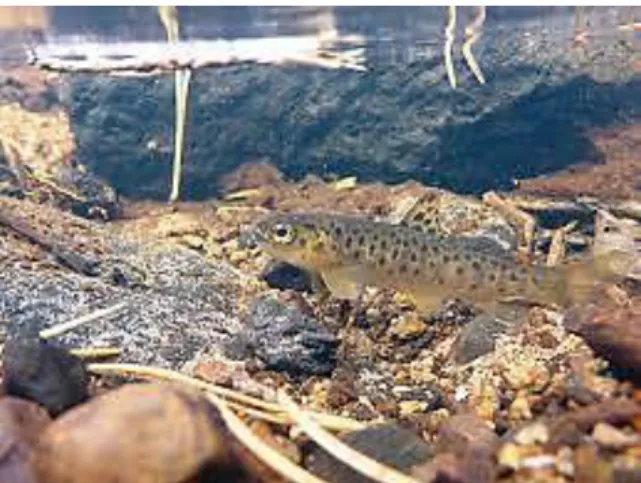
The brook trout
The primary goal of this study was to determine the effects of freshwater pearl mussel glochidia infection on brown trout during feeding and interactions with both uninfected individuals of their own species and invasive brook trout. Another aim of the study was to test whether the number of aggressions initiated differs between individuals in isolated groups of only infected brown trout, uninfected brown trout, and uninfected brook trout. For the group experiments, I hypothesized that the number of aggressions initiated would be much lower for infected brown trout compared to other fish.
H2: An isolated group of uninfected brown trout should have a higher number of initiated aggressions than an isolated group of uninfected brook trout. H5: Brook trout cannot remain infected throughout the larval metamorphosis period of freshwater pearl mussels.
Field work
H3: The general dominance behavior and related parameters will decrease with increasing glochidia infestation, when tested among brown trout. H4: Species will influence the outcome of the pairwise interactions, although how much is unknown due to the artificial environment of the laboratory. Lindåsabäcken is located in this area, which means that the local host fish has a very similar genetic makeup to the collected brown trout.
An air pump was attached to the coffin to ensure that the fish were supported with oxygen. The coffin and its contents were then transported to the Zoology building in Gothenburg app.
Laboratory work
- Infestation
- Tagging the fish
- Further preparations
- Recording of general behavior in storage tanks
- Pairwise interaction experiment
The fish were initially fed 1 pint of dry food per day to see if they would start eating. Due to the combination of the low level of infection (less than 10 larvae), the short period of infection, and the long 1-month interval between infection and experiments, it was determined that the fish were healthy enough to participate in the experiments. Fish were divided into three identical aquaria to separate brown trout, uninfected brown trout, and infected brown trout prior to the present experiments.
These tanks were mainly used to house the fish when they were not being experimented on. However, they were also used when recording the fish's daily activity and behavioral traits for the group interaction experiments (more on this in 3.2.4 Recording of general behavior in storage tanks).
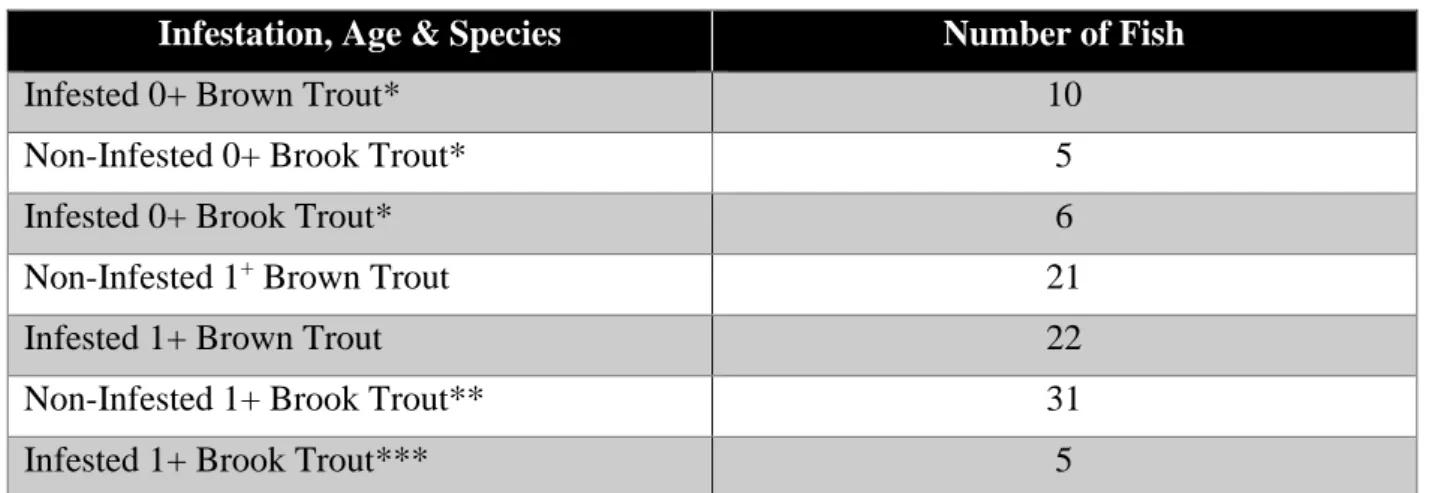
Statistics
Length of infestation period for brook trout
Behavior in storage tanks
Mean number of initiated aggressions in isolated groups of only infected brook trout, uninfected brook trout and uninfected brook trout. The average is calculated from the number of seizures triggered in the random 10-minute intervals used in the data analysis.
Pairwise interactions
Before feeding
Instead, weight preference is assumed to play a greater role as it had a significant effect according to the ANCOVA test (F=4.826, p=0.032). While infected fish were generally responsible for a smaller proportion of strikes, class 2 fish exhibited dominant behavior more often than class 1 fish. The boxes themselves contain 50% of the group values, with the remainder divided between the two quartiles (arrow-looking lines).
The lower quartile contains the 25% lowest values, while the upper quartile contains the 25% highest (excluding extreme values).
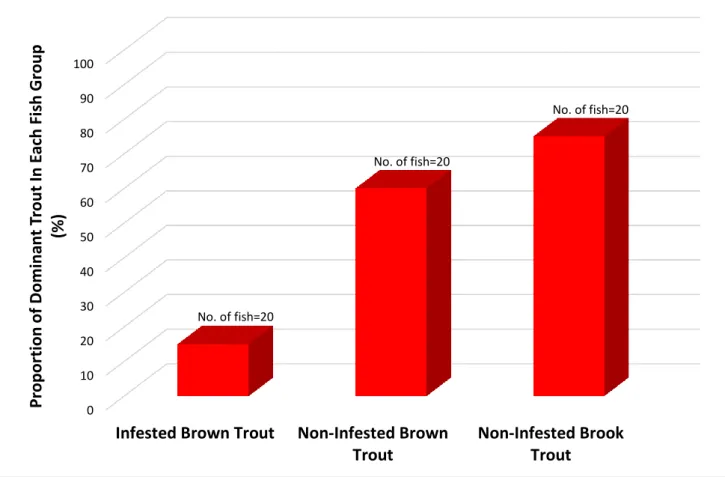
After feeding
Unfortunately for the freshwater pearl mussel, brown trout have proven to be a poor substitute for brook trout. Dominant brown trout were previously observed to maintain their social status in subsequent interaction tests (Tiira et al., 2009). Therefore, any significant behavioral difference between groups can only be observed between brook trout without glochidia and the other two groups.
However, the infected brook trout were not completely isolated, as their aquarium also housed three brook trout that had swelling in the chest area. In fact, the most aggressive brook trout was identified as one larger individual used in a pair interaction experiment. In comparison, only three out of 20 uninfected brook trout and one out of 20 brook trout died.
One possible explanation is the simple fact that brown trout suffered additional stress from being outside their natural habitat and subjected to various experiments. This indicates that the immune responses to this type of parasitization in such young brown trout are not yet fully developed, making them less resistant than brown trout of the same age. It is those brown trout that will be problematic in the wild because they have a major advantage over infected brown trout.
Older brook trout are fierce competitors, and small sea trout tend to avoid streams inhabited by larger individuals of the invasive species (Lovén Wallerius et al., 2022). This study provides important information for conservation projects of both sea trout and freshwater pearl mussel. Since brook trout benefit from the trout-glochidia larvae relationship to the detriment of the other two species, the goal should be to immediately remove brook trout from all mussel streams.
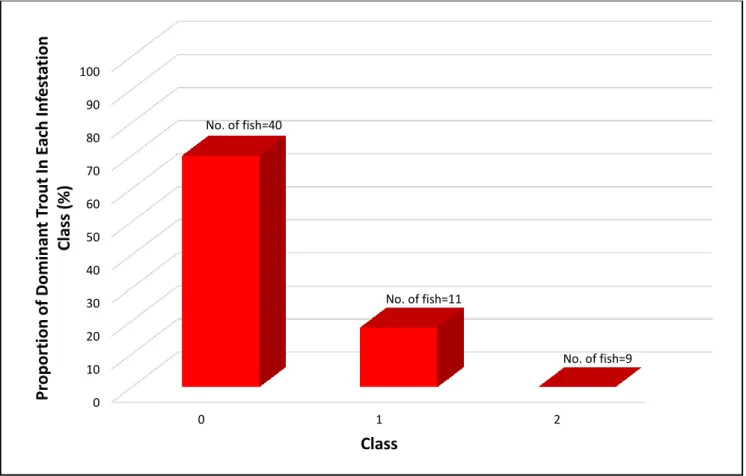
Conclusions
Effect of glochidia infection on fish growth: freshwater pearl mussel Margaritifera margaritifera and brown trout Salmo trutta. Margaritifera margaritifera) larvae coincides with increased metabolic rate and hematocrit in small brown trout (Salmo trutta). Heavy loads pf parasitic larvae of freshwater pearl (Margaritifera margaritifera) impair foraging, activity and dominant performance in small brown trout (Salmo trutta L.).
Male dominance linked to size and age, but not to 'good genes' in trout (Salmo trutta). Interspecific interactions between the native trout and the invasive brook trout: Insights into behavior and morphology. Asymmetric competition for space and territory between native trout (Salmo trutta) and invasive brook trout (Salvelinus fontinalis).
Higher mortality of the less suitable brown trout host compared to the main Atlantic salmon when infected with freshwater pearl mussel (Margaritifera margaritifera) glochidia. Non-born brook trout (Salvelinus . fontinalis) and the die-off of native brown trout (Salmo trutta) in northern boreal lakes: stealthy, long-term patterns?. Critical swimming speed of brown trout (Salmo trutta) infected with freshwater pearl mussel (Margaritifera margaritifera) glochidia and implications for artificial breeding of an endangered mussel species.
Coexistence with non-native brook trout disrupts the integration of phenotypic traits in brown trout parr. Experimental cross-breeding reveals strain-specific variation in mortality, growth and personality in brown trout (Salmo trutta). Parasitic larvae of freshwater pearl mussels (Margaritifera margaritifera L.) reduce feeding fate of small brown trout (Salmo trutta L.) drift.
Popular science summary
While the brown trout benefit from sharing their habitats with the freshwater pearl mussel because they filter and clean the water, the fish are still negatively affected by the actual larval infestation. Various researchers have reported various ailments associated with the infection, including reduced swimming performance, enlargement of the spleen and reduced dominance performance. The latter has attracted interest and curiosity from the scientific community, as it may indicate that the infected trout are at a disadvantage when competing with healthier individuals.
The issue has become increasingly complicated with the spread of brook trout (Salvelinus fontinalis) in Swedish waters. This is also a threat against freshwater pearl mussels, as brook trout are very poor substitutes for host fish. Through my research at the University of Gothenburg, more evidence has emerged that the mussel lifestyle is more of a burden under current circumstances.
In this study, infected brook trout and uninfected brook and brook trout were matched in pairs to test whether larval infection resulted in reduced dominance displays. This was measured by counting the number of thrusts and bites (referred to as strikes) that the fish would make against each other. While the number of strikes varied greatly between the different tests, the proportion of strikes between the two fish in each test was clearly in favor of the uninfected trout.
Unfortunately, the results of the experiment have dark implications for the future of the freshwater pearl mussel. Since the hosts are less resistant to other competitors, they are at greater risk of starvation or being killed by territorial trout. Fortunately, there are several projects that try to help the trout and the freshwater pearl mussel, including frequent removal of invasive brook trout.
Data collected from film recordings of the storage tanks
Data collected when analyzing the film recordings of the pairwise interaction
Results from the statistics
